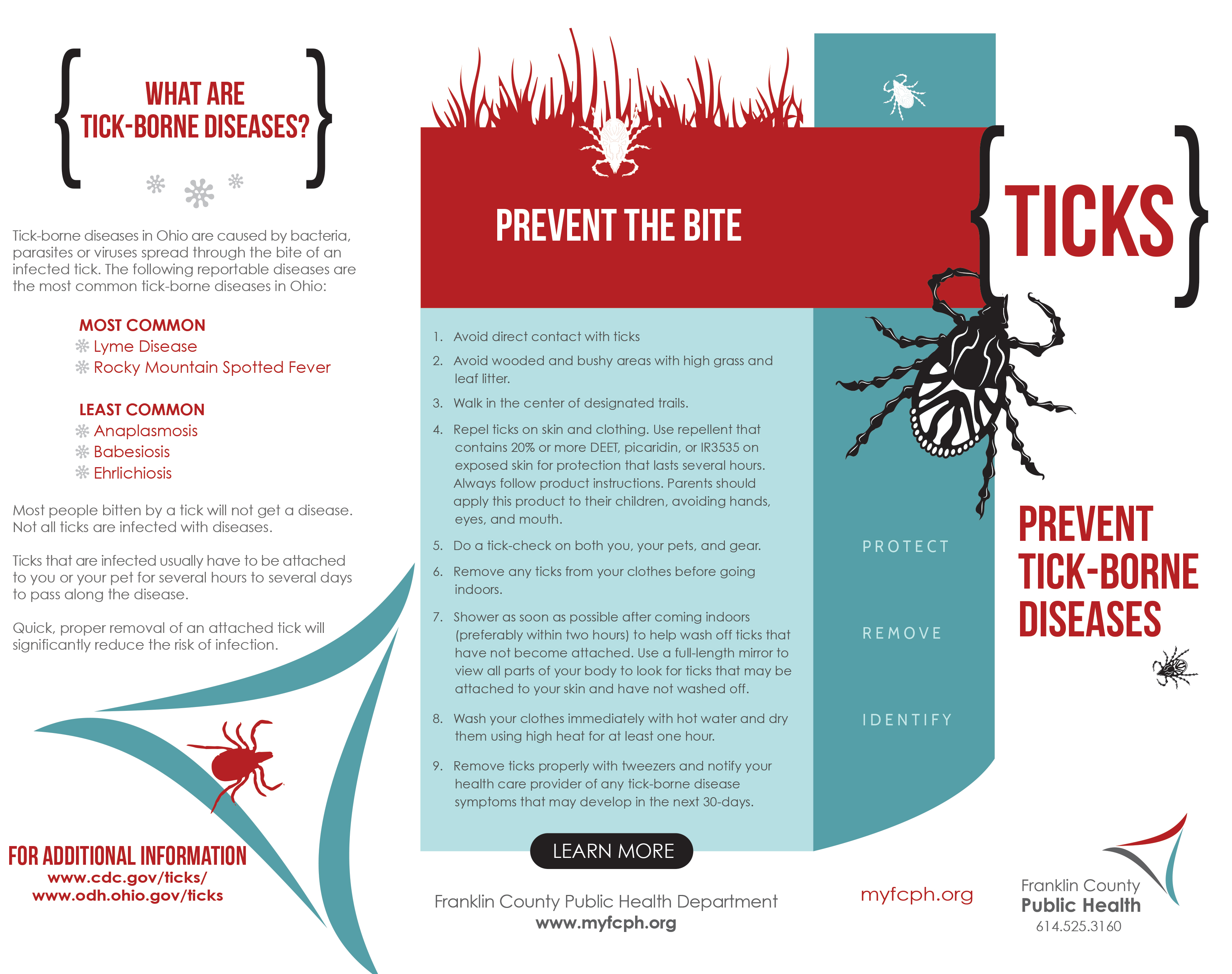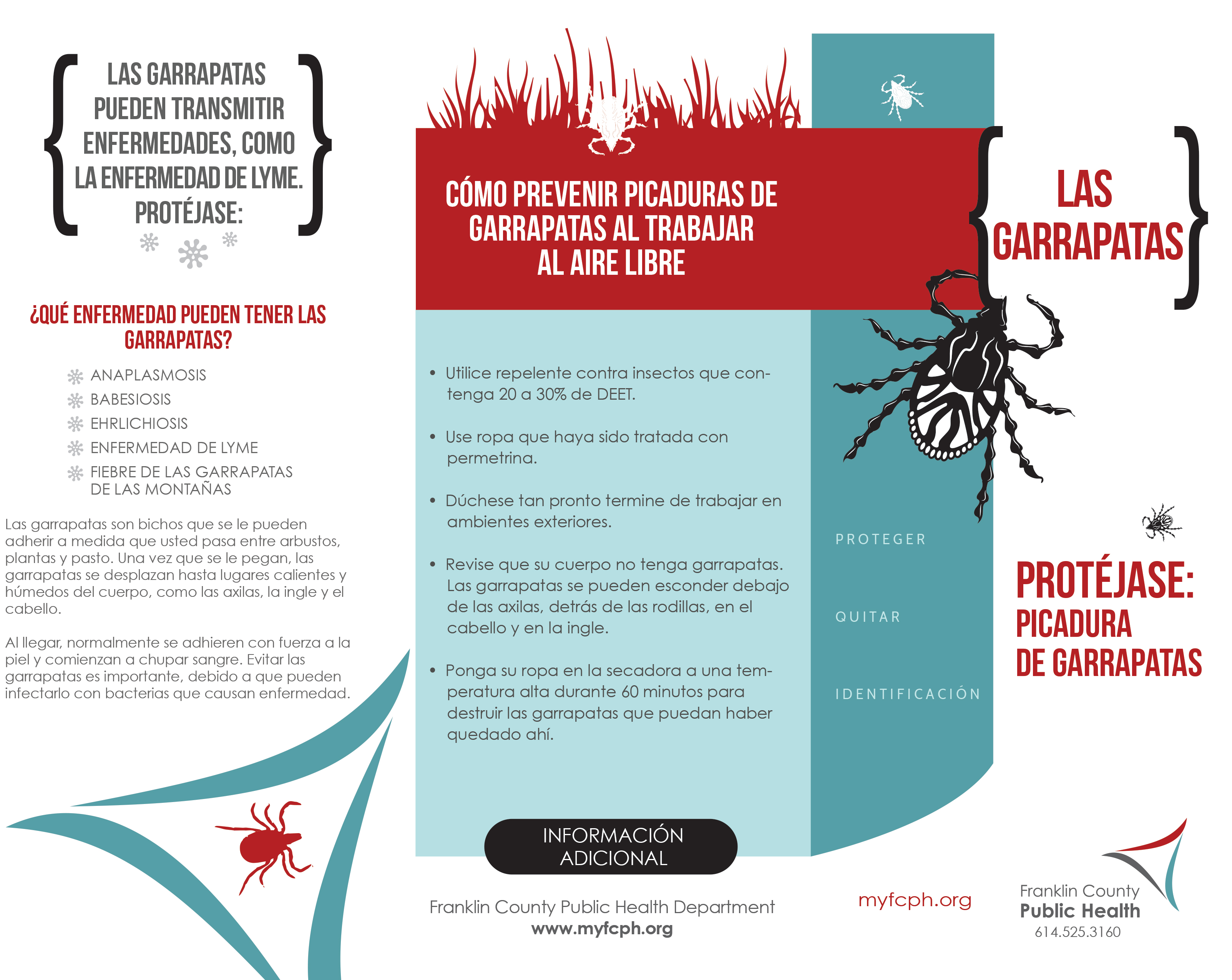Overview
Ticks are abundant in the spring and summer months and it is important to protect yourself from tick bites and reduce your risk of tick borne diseases. Ticks are most commonly found in wooded and bushy areas and where there is high grass. Avoiding these areas is the best prevention, but insect repellents and wearing light colored clothing is also important to protect yourself. Learn more about ticks.
Frequently Asked Questions
In Ohio, there are several diseases that are of concern: Lyme disease, Rocky Mountain spotted fever, Anaplasmosis and Ehrlichiosis. If you suspect you might have a tick transmitted disease, please seek immediate medical attention.
If a tick is attached to you, please take the following steps to remove it from your body.
CDC Guidance for Tick Removal and Self Check for Ticks
There are several labs that test ticks for a fee if you would like to do an internet search to find one in the area. Franklin County Public Health cannot endorse a lab for you to use.
Yes, Franklin County Public Health will provide tick identification for residents of Franklin County for ticks that were found on or attached to humans or pets. Once the tick species is identified, we can advise what diseases are associated with that particular tick. Testing of the ticks for the presence of diseases is not a service we are able to provide. In order to have a tick identified, please take the following steps:
- The tick must be removed from the person. FCPH will not remove a tick from someone’s body; please take the following steps to remove it. Please seek medical attention if unable to remove the tick.
- We will not pick up ticks.
- Please complete the online Tick Identification Submission Form.
- FCPH will identify the tick in a few business days.
- Keep the tick! We may reach out to you with additional questions if we are having difficulty identifying the tick. You can place the tick in a small, air-tight container, such as a pill bottle or baby food jar, with a few drops of rubbing alcohol to preserve it.
- Findings will be sent to the person listed on the Submission Form via the method of communication indicated on the form. This will include the species of tick identified and what diseases are associated with it.
If you have any medical concerns, please discuss the situation with a doctor. They should explain and advise you on the signs and symptoms of tick-borne diseases.


